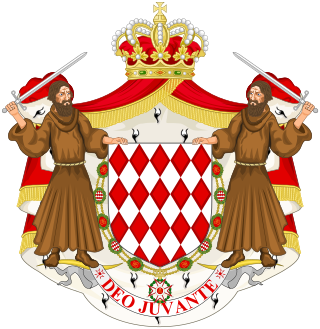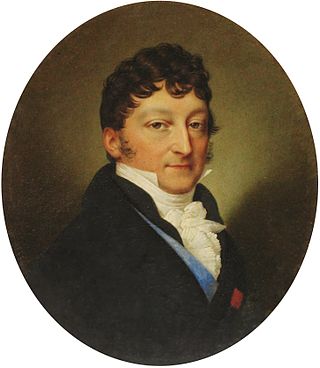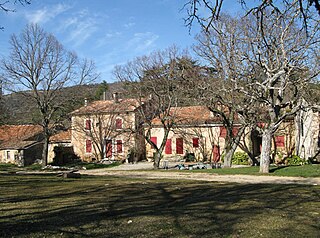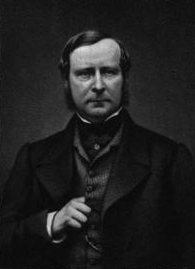
The House of Blacas is the name of two old French houses which successively owned the Lordship of Aups with its castle in Provence (whose name is still spelled in the ancient form Aulps in their surname).

The House of Blacas is the name of two old French houses which successively owned the Lordship of Aups with its castle in Provence (whose name is still spelled in the ancient form Aulps in their surname).
The first Blacas, Pierre d'Aulps, is said to have participated in the First Crusade and to have stemmed from the House of Baux, whose arms are similar to those of Blacas, but with the tinctures reversed (this claimed filiation is still expressed by the two banners with the Baux arms in the coat of arms of the Dukes of Blacas). As early as the 12th century his grandson Blacacius de Blacas (died 1236), called "the great warrior," distinguished himself among the most valiant knights of the court of Ramon Berenguer IV, Count of Provence. He married Laure of Castellane, and excelled as both a soldier and a troubadour. He left three sons, two named after him and one named Boniface. Blacasset succeeded his father as a troubadour while Boniface succeeded in Aulps and married Ayceline of Moustiers. From this union was born another Blacasset, who accompanied Charles I to Naples. His name was immortalized by Frédéric Mistral who attributed him the positioning of the chain that links up the two boulders at Moustiers-Sainte-Marie. Captured by infidels, Blacasset is supposed to have vowed that, if freed, he would stretch this chain between the boulders and from it suspend a sixteen-branched star, emblem of his family.
The first house of Blacas became extinct at the end of the 14th century, but its heiress, Philippa de Blacas, married around 1380 Rostang de Soleilhas (perhaps a relative in the male line) who then assumed the name and arms of Blacas. The present house of Blacas descends from them.
Lords of the town of Aups, the family fought with the town from 1346 to 1712. Aups won the contest in the end, becoming a direct legal dependent of the French king. The Blacas family possessed the castles of Vérignon and of Aups as well as many other domains in the current district around Aups. The most famous member of the family was Pierre-Louis de Blacas d'Aulps, Count and later 1st Duke of Blacas, Peer of France, a renowned antiquarian and minister to King Louis XVIII during the Bourbon Restoration and a fervent legitimist after 1830.
The present chief of the name and arms is Casimir de Blacas d'Aulps, 7th Duke of Blacas (b. 1943).
Duke of Blacas is a title in the Peerage of France. It was created by ordinance dated 30 April 1821 and Letters patent dated 11 September 1824 for Pierre-Louis de Blacas d'Aulps, only surviving son of Alexandre-Pierre de Blacas, Lord of Aulps, Vérignon, Fabrègues, etc., Knight of Saint-Louis (known as le marquis de Blacas). He was a member of the Government of the first Bourbon restoration from 13 May 1814 to 19 March 1815. The 1st Duke had been previously made an hereditary Peer (without specific rank) as early as 17 August 1815, and had been created Count of Blacas in the French Peerage by ordinance dated 31 August 1817, but having not been regulated by Letters patent, this previous comital title did not become hereditary. In 1830, he refused to recognize Louis-Philippe as King of the French and so lost his seat in the House of Peers. Later, he also received, by diploma dated 23 June 1838, the Austrian title of prince ( Fürst von Blacas d'Aulps), hereditary in the male line (with the title of Count for cadet sons).
The Heir Apparent is the present holder's only son Marquis Louis-Stanislas de Blacas d'Aulps (b.1982).
The family seat is now the Château d'Ussé (Indre-et-Loire), inherited in 1883.
Argent, a star of sixteen points gules. Two banners gules, a star of sixteen points argent, crossed in saltier behind the shield surmounted by a coronet of prince and supported by two wild men proper, under the mantel and ducal coronet of a Peer of France (the mantle azure lined with ermine and fringed with gold). Motto: PRO DEO, PRO REGE. Crest: An oak sinople issuant from a French Baron's coronet proper. War-cry: VAILLANCE.
According to Frédéric Mistral, the family crest is canting because blacas also means "white oak" in Provençal [1]

Ussé is a castle in the Indre-et-Loire département, in France. The stronghold at the edge of the Chinon forest overlooking the Indre Valley was first fortified in the eleventh century by the Norman seigneur of Ussé, Gueldin de Saumur, who surrounded the fort with a palisade on a high terrace. The site passed to the Comte de Blois, who rebuilt it in stone.

Les Baux-de-Provence, commonly referred to simply as Les Baux, is a rural commune in the Bouches-du-Rhône department in the Provence-Alpes-Côte d'Azur region in Southern France.

Prince of Orange is a title originally associated with the sovereign Principality of Orange, in what is now southern France and subsequently held by sovereigns in the Netherlands.

In British heraldry, a coronet is any crown whose bearer is less than sovereign or royal in rank, irrespective of the crown's appearance. In other languages, this distinction is not made, and usually the same word for crown is used irrespective of rank In this use, the English coronet is a purely technical term for all heraldic images of crowns not used by a sovereign, and implies nothing about the actual shape of the crown depicted. A Coronet is another type of crown, but is reserved for the lower ranks of nobility like Marquesses and Marchionesses, Earls and Countesses, Barons and Baronesses, and some Lords and Ladys. The specific design and attributes of the crown or coronet signifies the hierarchy and ranking of its owner.

The House of Grimaldi is the current reigning house of the Principality of Monaco. The house was founded in 1160 by Grimaldo Canella in Genoa and became the ruling house of Monaco when Francesco Grimaldi captured Monaco in 1297.

This is a list of the Lords, Barons and Marquisses of Baux.

Ludwig Adolf Friedrich, 2nd Prince zu Sayn-Wittgenstein-Berleburg-Ludwigsburg, from 1861 Prince zu Sayn-Wittgenstein-Sayn, was a Russo-German aristocrat. Among his properties were the famed Mir Castle Complex and Verkiai Palace.

Marie Hervé Jean Bruno d'Harcourt, Comte d'Harcourt was a member of the French nobility and a Grand Prix motor racing driver.

The House of Baux is a French noble family from the south of France. It was one of the richest and most powerful families of medieval Provence, known as the 'Race d’Aiglon'. They were independent lords as castellans of Les Baux and Arles and wielded very considerable authority at the local level. They held important fiefs and vast lands, including the principality of Orange.

Pierre-Louis Jean Casimir, Count of Blacas d'Aulps, later created 1st Duke of Blacas (1821), was a French antiquarian, nobleman and diplomat during the Bourbon Restoration.

Vérignon is a commune in the Var department in the Provence-Alpes-Côte d'Azur region in southeastern France.

Princess Isabelle Françoise Hélène Marie d'Orléans was a member of the House of Orléans and, by marriage, a member of the ducal Harcourt family and of the princely House of Murat.

Schloss Frohsdorf is a castle-like complex in Lanzenkirchen in Niederösterreich and was built 1547–50 out of the ruins of the so-called "Krotenhof".

Louis Charles Pierre Casimir de Blacas d'Aulps, 2nd Duke of Blacas, 2nd Prince of Blacas was a French nobleman and antiquarian.

The House of Bethune is a French noble house from the province of Artois in the north of France whose proven filiation dates back to Guillaume de Béthune who made his will in 1213. This family became extinct in 1807 with Maximilien-Alexandre de Béthune, Duke of Sully (1784-1807).

Alexander Konrad Friedrich Heinrich Prince zu Sayn-Wittgenstein-Sayn, a German businessman, is head of the Princely House Sayn-Wittgenstein-Sayn.

Casimir de Rochechouart, 11th Duke of Mortemart, prince of Tonnay-Charente, then Baron of Mortemart and of the Empire, 11th duke of Mortemart and peer of France (1814), was a French soldier, diplomat and politician. In 1830 Charles X of France made him president of the Conseil des ministres.
Pierre-Louis or Pierre Louis is a given name and a surname. Notable people with the name include:

The House of Sabran was an illustrious Provençal family of knightly extraction extinguished in 1847 in the person of Elzéar-Louis of Sabran, general, made a hereditary peer of France in 1815, comte-pair (count-peer) in 1817, and duc-pair (duke-peer) in 1825. Among its members are two Catholic saints, three bishops, and five generals.

Amédée-François-Régis de Pérusse des Cars, Duke of Cars, was a French nobleman and soldier.
Hubert Cuny, Nicole Dreneau, Le Gotha français : état présent des familles ducales et princières (depuis 1940), Paris 1989.
Vicomte de Ponton d'Amécourt, Notice nécrologique sur M. le Duc de Blacas d'Aulps, né le 15 avril 1815, mort à Venise le 10 février 1866, Paris 1866 (extrait de la Revue numismatique).
Vicomte A. Révérend, Titres, anoblissements et pairies de la Restauration, vol. I, Paris 1906.